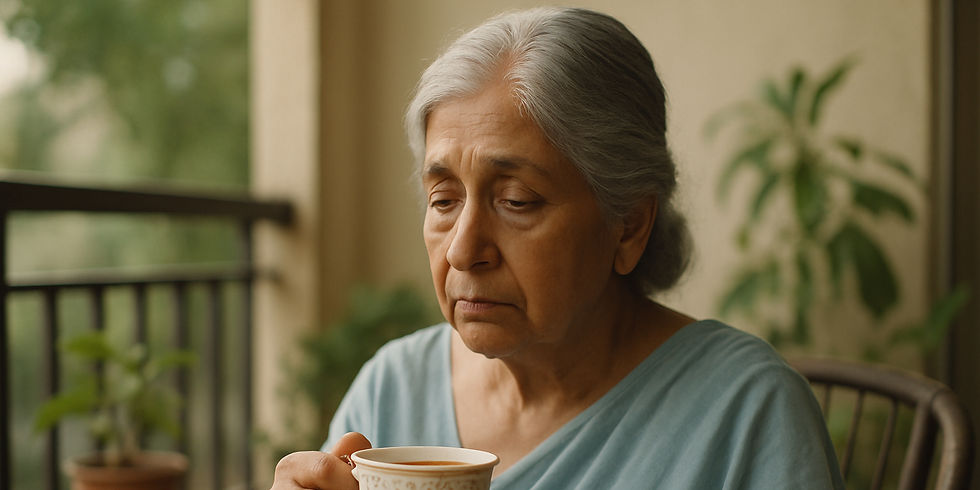Comprehensive Stroke Care: Expert Tips for Managing and Supporting Stroke Patients
- Tahia Islam

- Mar 5, 2023
- 4 min read
Updated: Jul 17, 2024
Stroke is a severe medical condition that affects millions worldwide, including a significant number of people in Bangladesh. Understanding stroke, its types, and how to manage and care for stroke patients is crucial for improving their quality of life and aiding their recovery.
Understanding Stroke
A stroke occurs when the blood supply to part of the brain is interrupted or reduced, preventing brain tissue from getting oxygen and nutrients. Brain cells begin to die within minutes, which can lead to serious complications or death.

Curious how early detection of stroke symptoms and home caregiving can transform your loved one's life? Dive into our comprehensive guide, "The Importance of Caregiving for Stroke Patients: Supporting Recovery and Preventing Complications" for essential insights!
Stroke Care Plan
A well-structured stroke care plan is essential for managing the health and recovery of stroke patients. This plan should include medical treatment, physical therapy, cognitive rehabilitation, and lifestyle changes to support the patient's overall well-being.
Stroke Meaning in Bengali: Understanding the Essential Insights
In Bengali, stroke is referred to as "স্ট্রোক" (strok). Understanding this term is crucial for effective communication about the condition within the Bengali-speaking community.
Understanding Different Types of Strokes: Hemorrhagic, Ischemic, TIA, and Mild Strokes
There are several types of stroke, each requiring different approaches to care and treatment:
Hemorrhagic Stroke:
Caused by bleeding in the brain due to a ruptured blood vessel.
Ischemic Stroke:
Caused by a blockage in a blood vessel supplying blood to the brain.
Transient Ischemic Attack (TIA):
Often called a "mini-stroke," it is a temporary period of symptoms similar to those of a stroke.
Mild Stroke:
A less severe form of stroke, but still requires immediate medical attention.
Revitalize Stroke Recovery with Tailored Exercise Programs for Patients
Exercise is a vital component of stroke recovery. Stroke patients should engage in tailored exercise programs to improve mobility, strength, and overall health. Consulting with a healthcare provider is essential to ensure exercises are safe and effective.
Comprehensive After Stroke Care: Essential Steps for Recovery
Post-stroke care involves a multidisciplinary approach, including medical treatments, rehabilitation therapies, and lifestyle modifications. It is crucial to provide continuous support to stroke patients to enhance their recovery and quality of life.
Enhancing Recovery: Cognitive Rehabilitation for Stroke Patients
Cognitive rehabilitation focuses on improving cognitive functions that may be impaired after a stroke, such as memory, attention, and problem-solving skills. This rehabilitation is vital for helping stroke patients regain independence in their daily lives.
Optimal Nutrition: Food for Stroke Patients with Diabetes
Diet plays a critical role in stroke recovery, especially for patients with diabetes. A balanced diet low in sugar, salt, and saturated fats can help manage diabetes and reduce the risk of another stroke. Foods rich in fiber, lean protein, and healthy fats are recommended.
Effective Home Care Strategies for Stroke Recovery
Providing care at home for stroke patients involves creating a safe and supportive environment. This includes:
Physiotherapy for Brain Stroke Patients:
Regular physiotherapy sessions to improve mobility and strength.
How to Care for a Stroke Patient at Home:
Ensuring the patient’s needs are met, including medication management, personal care, and emotional support.
Physical Therapy for Stroke Patients at Home:
Tailored exercises to enhance physical recovery and prevent complications.
Diet for Stroke Patients:
A nutritious diet to support overall health and recovery.
Physiotherapy Treatment for Stroke Patients:
Specialized treatments to aid recovery and improve quality of life.
Recognizing Stroke Symptoms: Early Signs and What to Do
Recognizing stroke symptoms is crucial for timely intervention. Common symptoms include sudden numbness or weakness, especially on one side of the body, confusion, trouble speaking, difficulty seeing, and loss of balance or coordination.
Comprehensive Nursing Care Plan for Stroke Patients
A nursing care plan for stroke patients should address their unique needs, including monitoring vital signs, managing medications, providing physical and cognitive therapies, and offering emotional support.
Detailed Nursing Diagnoses for Stroke Patients
Nursing diagnosis for stroke patients includes:
Impaired Physical Mobility:
Due to weakness or paralysis.
Risk for Aspiration:
Due to swallowing difficulties.
Impaired Verbal Communication:
Due to aphasia or dysarthria.
Risk for Depression:
Due to changes in physical and cognitive abilities.
Cost of In-Home Care for Stroke Patients
The cost of in-home care for stroke patients can vary widely depending on the level of care required. It typically includes expenses for medical treatments, physiotherapy, nursing care, and personal support services.

Comprehensive Home-Based Stroke Recovery Plan
An effective care plan for stroke patients at home involves:
Nursing Care for Stroke Patients at Home:
Professional nursing care to monitor health status and provide necessary treatments.
Nursing Care Plan for Stroke Patients:
A comprehensive plan that includes physical, emotional, and psychological support.
In Bangladesh, the home healthcare landscape is evolving, and HCCL stands out among service providers. Their team of skilled caregivers excels in supporting stroke patients, as well as families in need of caregiving assistance.
HCCL goes beyond medication by incorporating mental and behavioral exercises into its care routines, offering a holistic healing experience. Our stroke care units have earned a stellar reputation, serving numerous clients in Dhaka and Chattogram.
With a commitment to comprehensive, compassionate care, HCCL ensures that individuals facing serious illnesses or recovering from strokes receive the best support. Trust HCCL for reliable, all-encompassing home healthcare.
Conclusion
Caring for stroke patients requires a comprehensive and individualized approach to support their recovery and improve their quality of life. By understanding the different aspects of stroke care, including medical treatments, rehabilitation therapies, and lifestyle changes, caregivers can provide the best possible support for stroke patients. Whether through structured care plans, tailored exercise programs, or proper diet management, each element plays a crucial role in the journey to recovery.






Comments